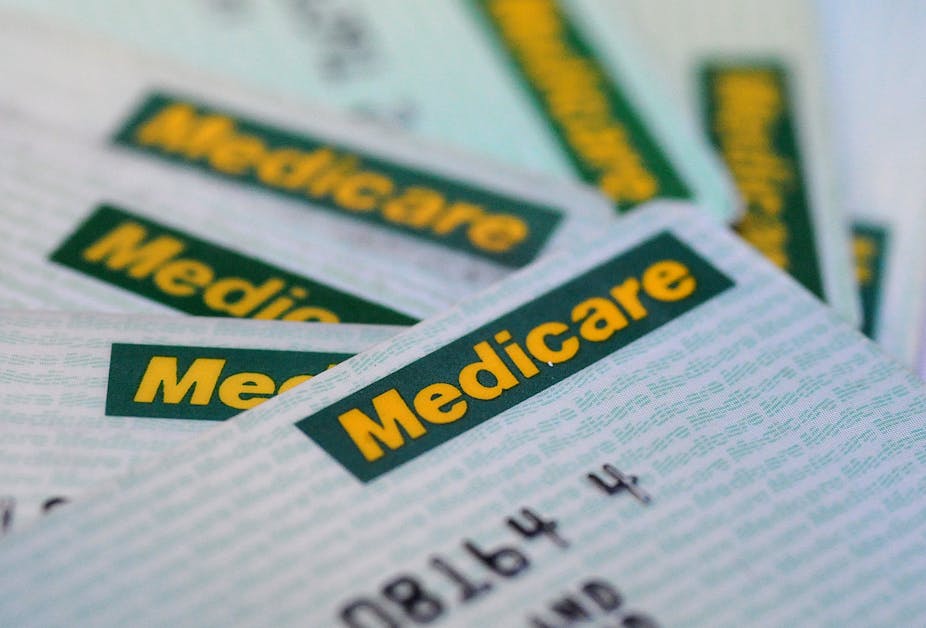Health Minister Nicola Roxon recently floated the idea that it might be time to revamp Medicare. Previous attempts have resulted in band-aid efforts to cover policy failures that contribute to out-of-pocket costs, but Medicare reform is not a hopeless cause.
Medicare was introduced in 1984 to provide “fair and affordable” health care to all Australians. But many people are now faced with extra costs for visits to the doctor, for having prescriptions filled and for diagnostic referrals, such as blood tests and ultrasounds.
Unfortunately, the incentives paid by the government have failed to provide the changes needed to shore up Medicare for the future.
New research conducted by The Australia Institute shows that, in total, Australians are paying more than $1 billion each year in out-of-pocket expenses for their medical care.
One in five visits to the doctor now results in gap fees not covered by Medicare. And almost a quarter of the people surveyed by the Institute said they’d postponed or avoided having a prescription for medication filled due to the cost.
Young women are more likely to pay gap fees and as many as two out of every ten Centrelink cardholder have paid to visit their doctor, despite their low-income status.
The role of doctors
Doctors have enormous discretion over how much patients pay, not just for their consultations, but also for medication and diagnostic tests.
But for the most part recent reforms have not focused on the role of doctors.
The prescribing rate for generic medicines, for instance, has been stuck at around 14% for the past ten years.

Only 6% of survey respondents reported first hearing about generic medications from their doctor, while 43% said they wouldn’t use generic medication without first checking with their doctor.
Most said they’d first heard about generic medications from a pharmacist.
In the past, the government regulated default settings on prescription software. One option for reducing out-of-pocket medical expenses is to do this again.
If, when a doctor enters the name of a medication into their computer, the active ingredient is listed instead of a brand name drug, then patients could easily be provided with cheaper options.
Diagnostic tests
Public awareness about the role of doctors in determining whether an individual pays gap fees for diagnostics, such as blood tests and scans is low.
When doctors request diagnostic testing, they do so via a referral. Fewer than two in ten people surveyed realised it was up to their doctor to tick the bulk-billing box on referral forms.
By ticking the box, a doctor can ensure that a patient won’t be charged any gap fees at all: if a referral indicates that the service is to be bulk billed, a private provider cannot overrule it.
Three out of ten survey respondents mistakenly believed the government made this decision.
The government has changed the emphasis on referred pathologists so patients can now, unless instructed otherwise by their GP, take a pathology referral to any pathologist of their choosing.
But, in most cases, doctors continue to use referral forms provided to them by private providers whose goal is to promote their business.

This effectively leads patients to private providers simply because the logos and addresses on the referral documents imply the test should be performed by that company.
Any gap fees that are charged are unlikely to be questioned, as the patient is following “doctor’s orders”.
New, unbranded forms could include a prominent field in which doctors could enter an estimate of the cost likely to be incurred if the patient doesn’t go to a public provider or isn’t bulk billed.
Such transparency would encourage patients to question the cost of tests should doctors fail to broach the topic.
Starting at the beginning
A fresh look at how Medicare serves the public rather than corporate interests is required – a fresh look that goes beyond the band-aid policies applied in the past.
Real structural reforms are needed that facilitate a functional and affordable health system that doesn’t rely on extra money from the public over and above their contributions as taxpayers. Much of what is paid as gap fees flow as profits to medical and pharmaceutical companies.
Greater public awareness of the role doctors play in determining out-of-pocket expenses will play a vital role in achieving better results for patients.

